 Mar 20, 2014 - 2:05 PM Mar 20, 2014 - 2:05 PM
|
|
|
Enthusiast Joined Dec 31, '13 From Yorkshire England Currently Offline Reputation: 0 (0%) |
Hey all, thinking about binning my lightweight alloy crankshaft pulley for the stock iron harmonically balanced pulley as my new builds got a crank seal leak and I'm thinking this might have somethin to do with it???
Is anybody running an alloy one without any probs? Got it from Fensport so I thought it would be the business but can't decide whether to revert back to OEM tommorow while I have it off. Any experience or thoughts on them would be muchly appreciated : ) Thanks Chris |
 |
Replies
 Mar 25, 2014 - 12:15 PM Mar 25, 2014 - 12:15 PM
|
|
 Enthusiast     Joined Aug 11, '08 From London Currently Offline Reputation: 7 (100%) |
Sorry Tigs.
Taken from the GT4OC: QUOTE ("tbdevelopments") Iíve been saying this for countless years to my customers not to fit the alloy crank pulleys in replacement of the standard Damper Pulley. Toyota did this for a reason and Iíve seen countless failures of the crank and quite a few with my own 2 eyes but up till now I have not recorded a failure, just did the repair as instructed. Well I had a customer come to me with a knocking coming from the bottom end of his GT4 ST205, the knocking sounded very much like a bigend rattle so I advised that if this was caught early enough we could drop the sump and as long as the crank was in perfect condition and the journal measurements came within specs and a plasti-guage final check we could get away with re-shelling the conrods, which basically means fitting new bearings with the crank in-situ and just bolt it all back up. If done correctly this is a perfectly adequate repair and will give many years of trouble free motoring. Conrod bearings will wear because of a few reasons, Age and power is the main one which is the conditions that give the most successful repair of this nature. The other is foreign material or metal entering the bearing or lack of oil, these will typically damage the crank which requires a bottom end partial rebuild. Upon inspection of this car I noticed it had an alloy crank pulley fitted (pictured below) 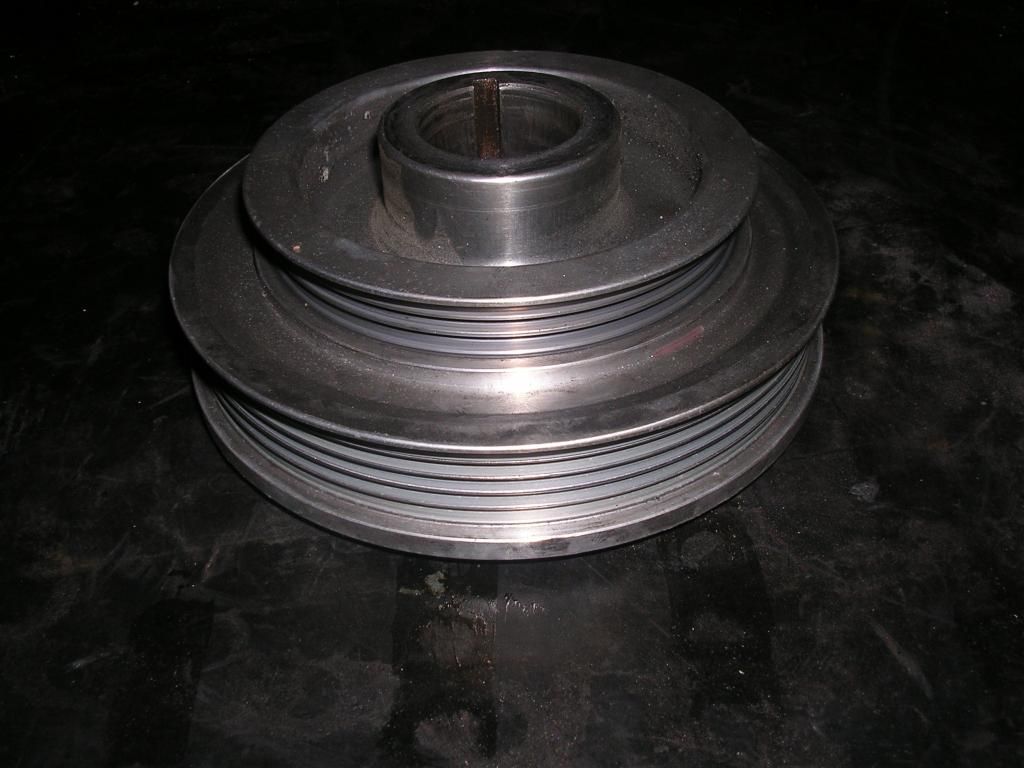 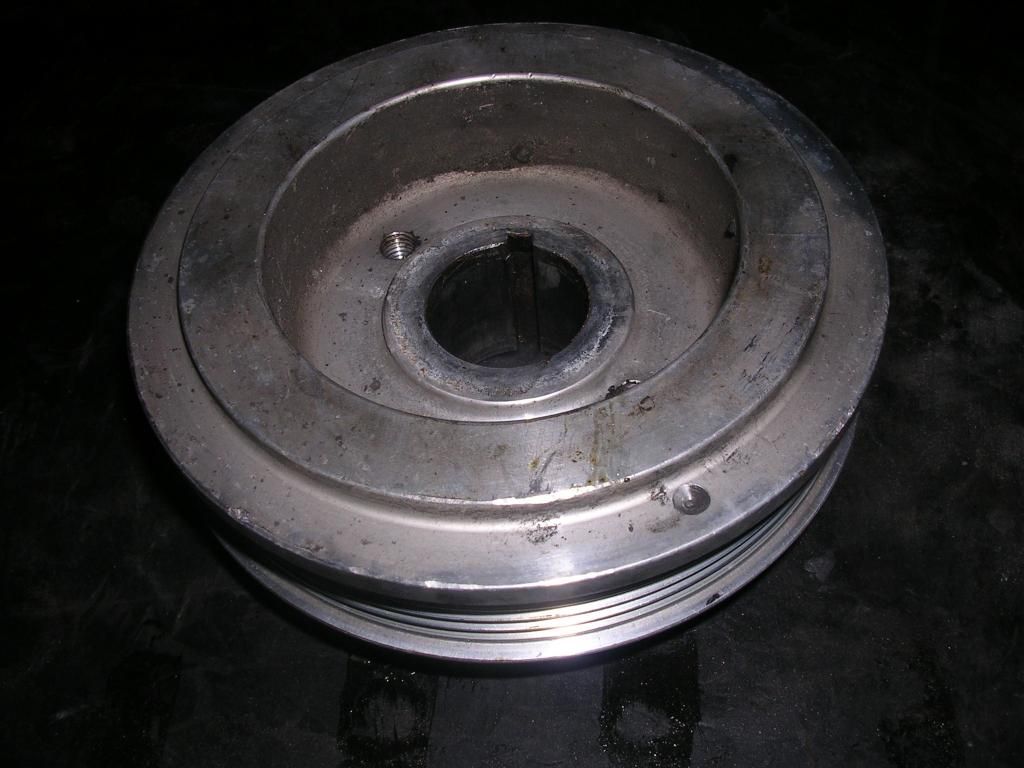 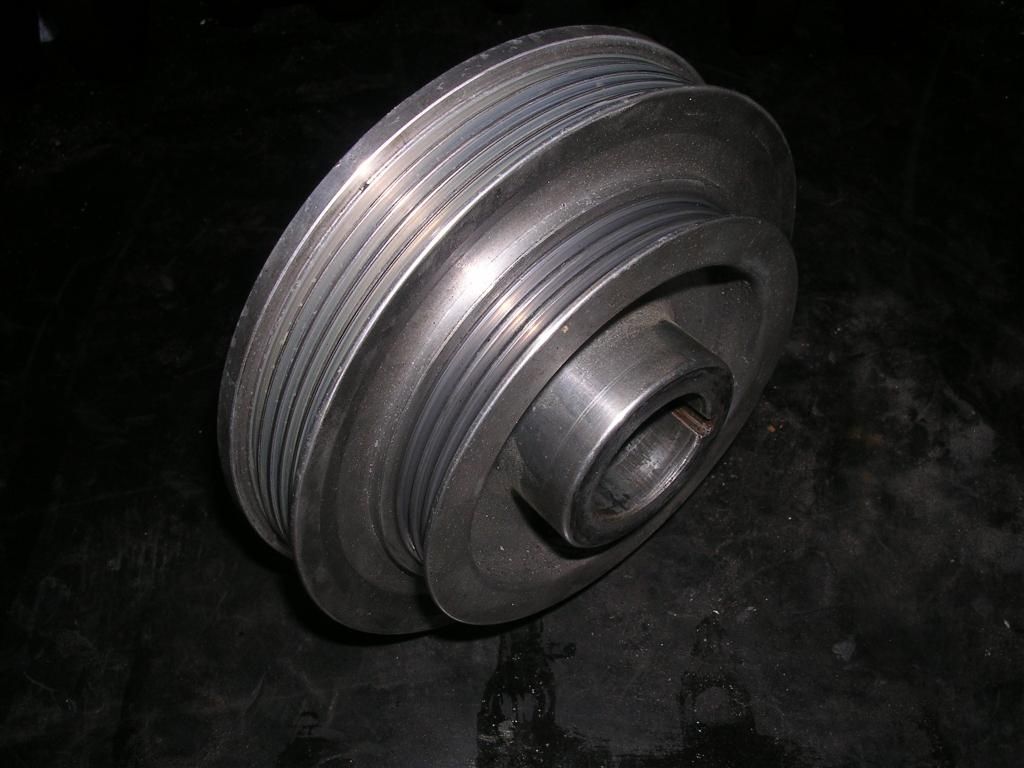 The sump was dropped and the bearings were inspected, #1,2,4 were all in perfect condition. #3 was in a terrible state, extensive wear and a deep grove down to the base metal of the bearing. This was the cause of the knocking. The crank was inspected and seemed in good condition but found a small lump on the top of the journal which you could just feel with your finger tip, at the time it was facing the top of the engine so I was feeling blind. Believing at first to be a part of the bearing stuck to the surface I rotated the crank to give a better view but found this damage instead. There was a fine Hairline crack which ran almost 3/4 the way around the bearing journal of the crank, and in one part the surface had pushed upwards creating that small lump felt earlier, and the cause of the deep grove created in the bearing. Damage pictured below  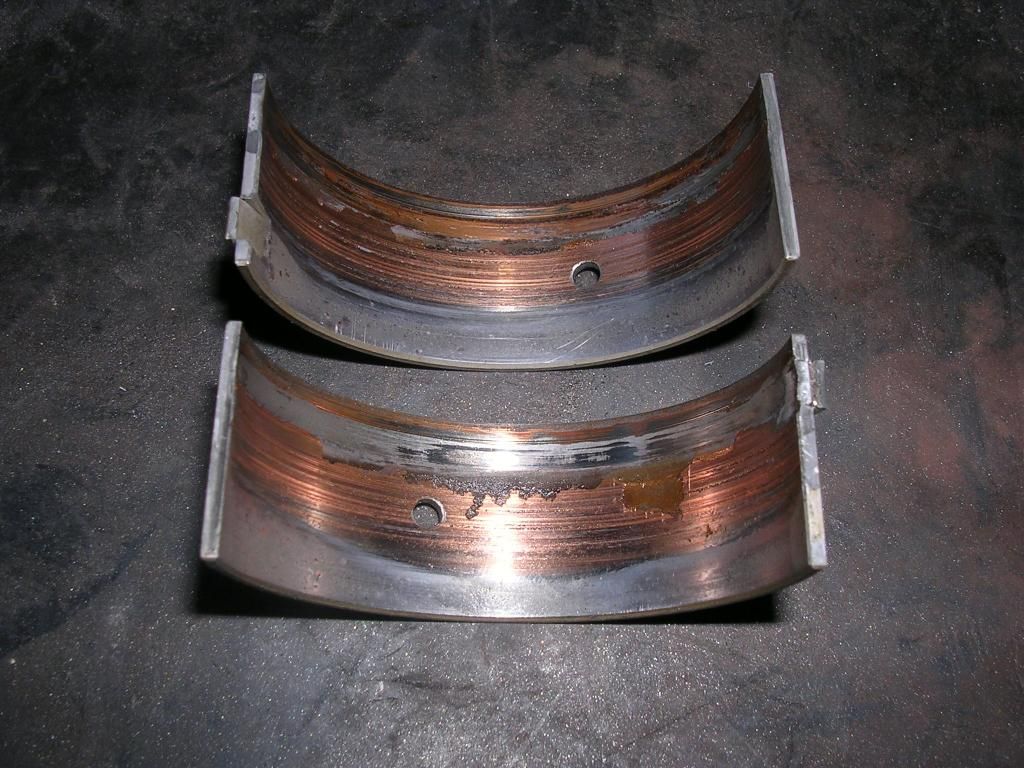 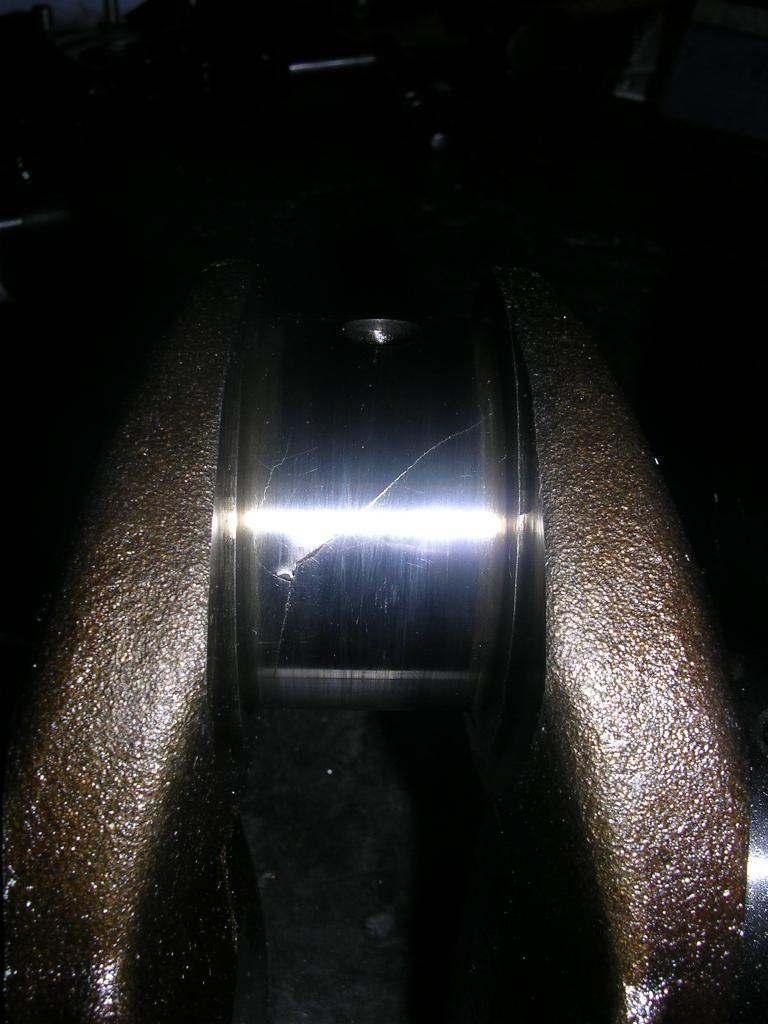 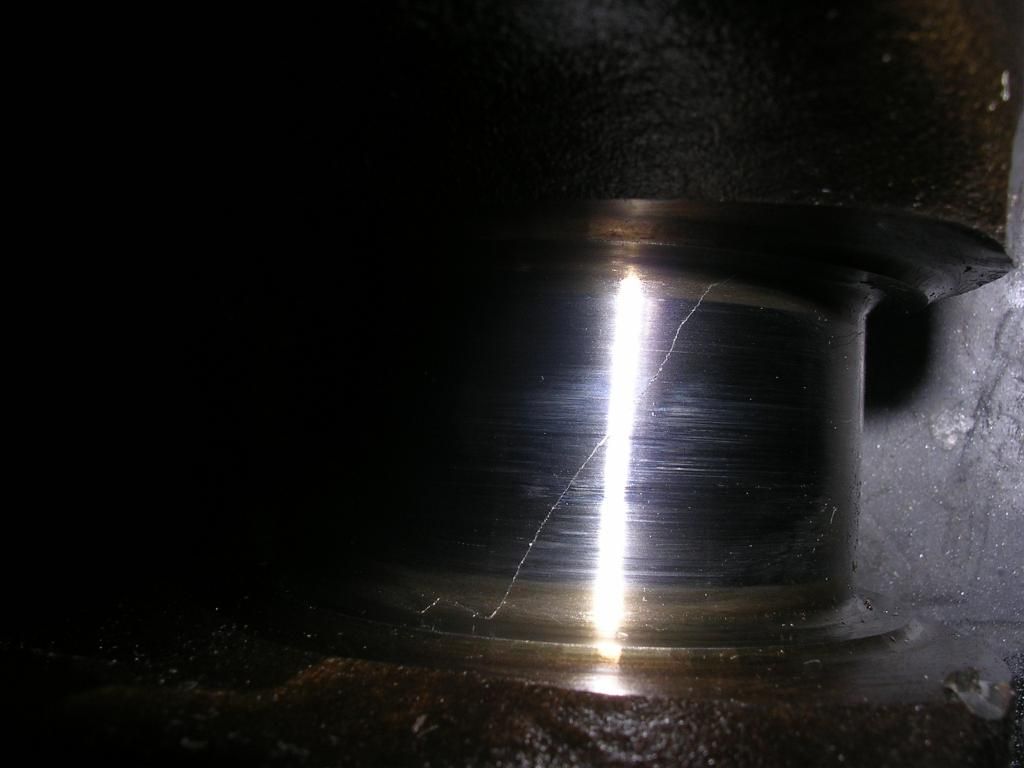  The job was completed with a new set of bearing throughout, a replacement crank that was rebalanced, journals polished for clearance and rebuilt. The alloy pulley was also replaced with a factory item and the customer collected his car, Which had an initial fire-up and running-in by my to set the bearings and 300miles of normal driving before replacing the oil and going back to normal full boost operations. The car this happened to only modification was an exhaust system; boost was even standard so power wouldnít have exceeded 260bhp at the most. Yet the crank had failed. To put this into perspective weíve done drag cars running over 900bhp with standard cranks without a single failure or even bend. Some models for testing were also extremely machined to remove any metal we could for revablity, they were machined like pieces of paper and at still exceeding 900bhp still not a failure. All these were fitted with the standard damper pulley. Yet this example failed at 260bhp with a pulley that could control the harmonics which had lead to its premature failure. The reason behind the failure was Harmonic Resonance Failure. Without getting to in-depth Iíll keep the explanation simple but there are a few good examples for the technical minds amongst us on wikipedia. http://en.wikipedia.org/wiki/Resonance http://en.wikipedia.org/wiki/Harmonic_oscillator Basically everything in the universe vibrates, whether it is the human body, sheet of metal, or in this case a crank. This is called its structural resonance frequency. Now this frequency is best expressed as a wave, with its peaks and troughs. And if you can generate an additional wave with the matching frequency (so the peaks and troughs match) the amplitude of that wave will grow, or the item will vibrate with more force, itíll keeps growing until it structurally fails on a molecular level. To put this into everyday context you need to picture a swing with a fat man on it and your trying to push the swing with your little finger, Normally this isnít going to happen but if you can get the swing started adding the small amount of force at the correct period, just at the peak of the swing you can over time make the swing oscillate higher and higher. This swing is the oscillation frequency and at the top of each swing is the peaks of the wave form and the base of the swing would be expressed as its trough. Now if you continued to keep adding this small force at the top of each swing the arc would eventually get higher and higher until either the swing broke or the fat man fell off, this would be the expression of the structural resonance failure. To stop this you need a simple damper that will effect outside frequencies (in our case the engine) or crank rotation from matching the frequency of the crank resonance. Going back to our fat man on the swing the damper would be effectively stopping the outside force, (you with your little finger) pushing on the swing at the correct time, for example before the swing meets its peak point, This would do nothing to aid the swing and certainly wouldnít add force the its momentum making it arc higher and higher. This is what the Toyota standard Harmonic Damper Pulley does, it removes harmonic resonance from the crank and additional frequencies causing the failures were seeing above. For curiosity purposes I went all over the crank looking for more hairline cracks and found another around #2 journal leading into the counterweight but it was only very small, around 1cm in length but if left unattended would have grown like #3. So to see how far the resonance damage had gone I caused a controlled failure of the crank by putting in it a press until it snapped on the cracked areas. The pictures of this can be seen below. If you analyze the pictures you will see there are 2 different types of metal texture. The shinier, almost polished appearance is the damaged caused by the resonance; this is a failure on the molecular level and as you can see it quite extensive in #3 and starting to spread inwards on #2 just being visible on the outside edge. The other type is a more harsh texture, this was good metal until the press finished it off, this is typical of a pressure break where the cast material of the crank has basically shattered and all this was caused by me so ignore that. But it does show the 2 different types of damage, and how close this celiac came to complete destruction, where instead of a hairline crack and a rattley bearing the crank would have snapped pushing the rods out the side of the block casing and the entire engine unit would have been a total write-off. Before people jump the gun and say ďwell Iíve got one and running 400bhp for yearsĒ this isnít a situation where itís a loaded gun at your head, where you fire you will die. Itís a situation where failures can/normally happen eventually, ranging from a matter of weeks to years, and from standard power up to 1000bhp. Itís a device which doesnít address the base foundation of structural physics where the original Toyota unit does. I hope this has enlightened people to the dangers of fitting an item like this, yes you will save around half the weight of the stock pulley but this really doesnít add up to any noticeable gains in performance or revability and all its doing it radically effecting the longevity of the engine. 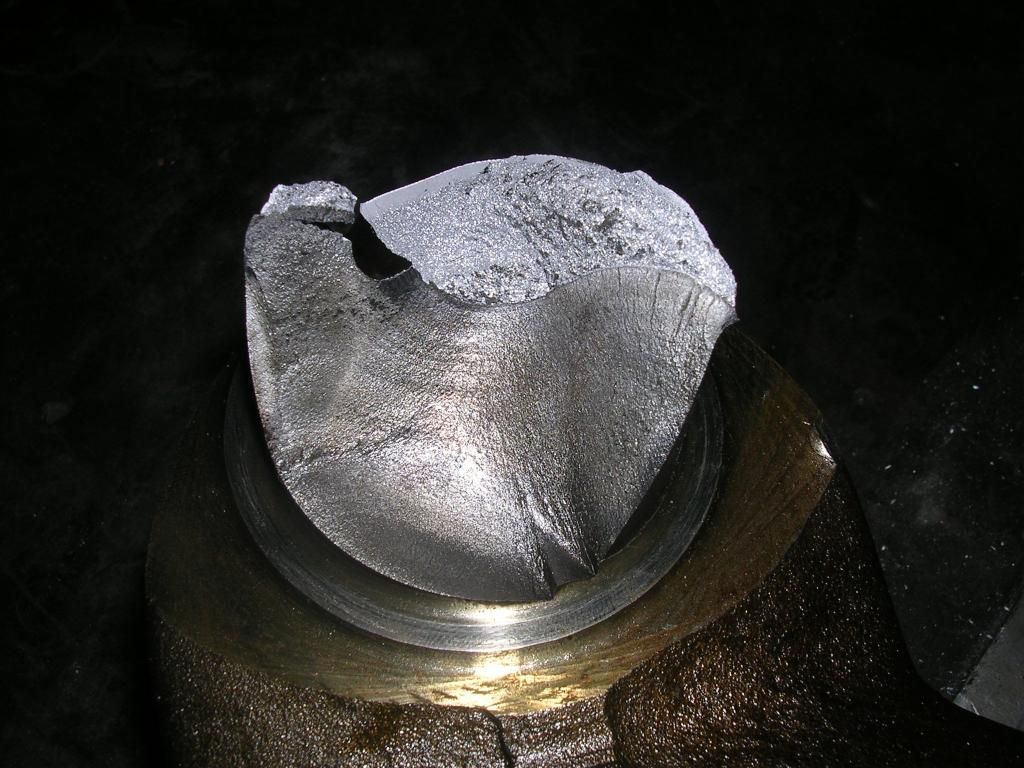 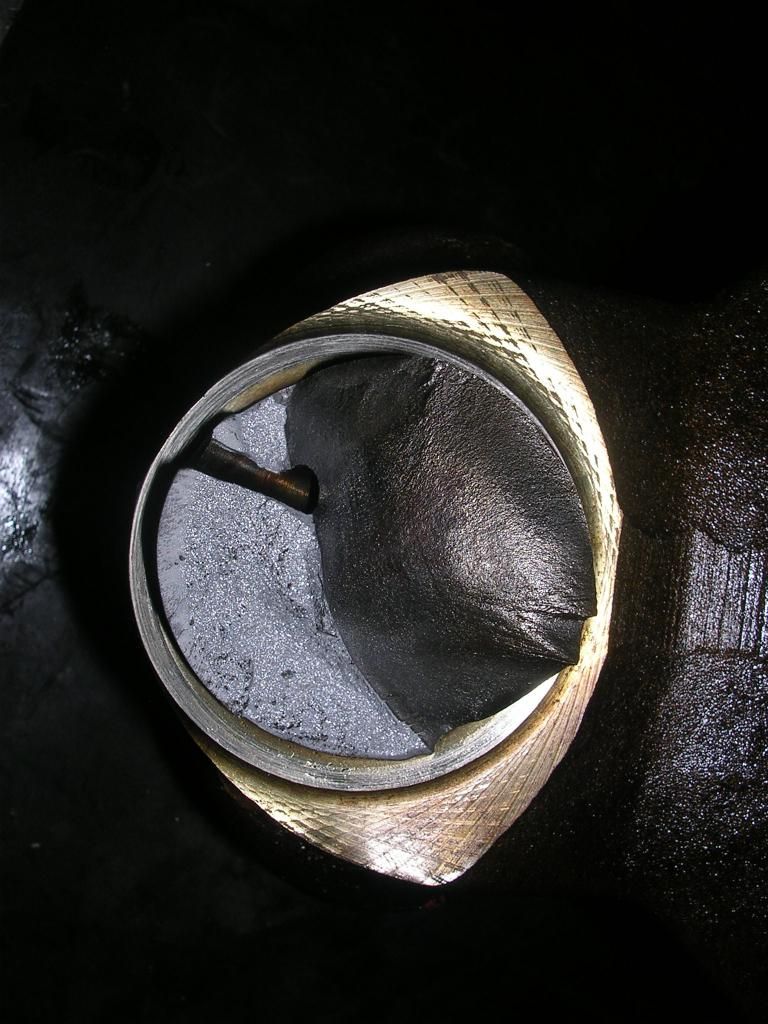 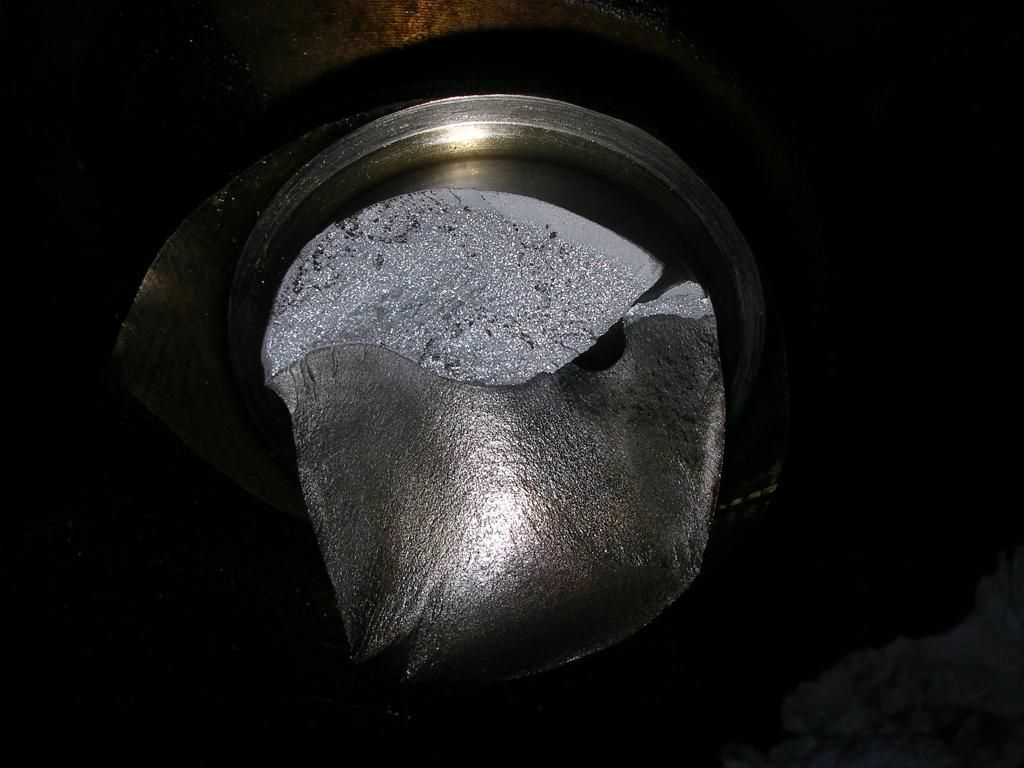 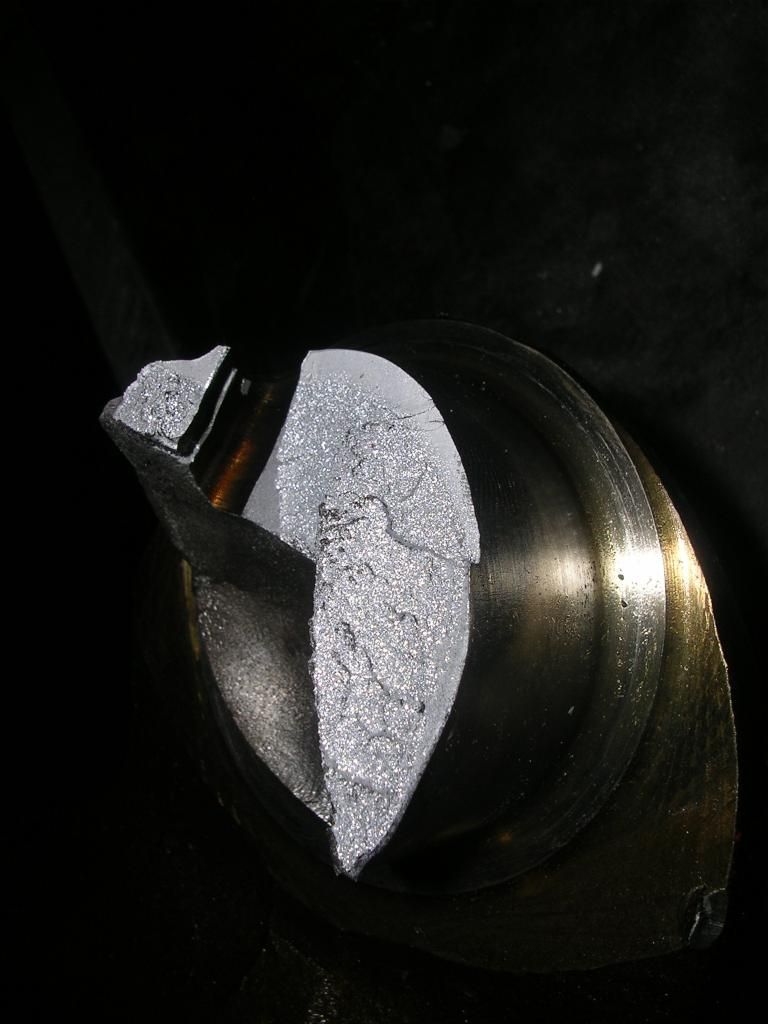 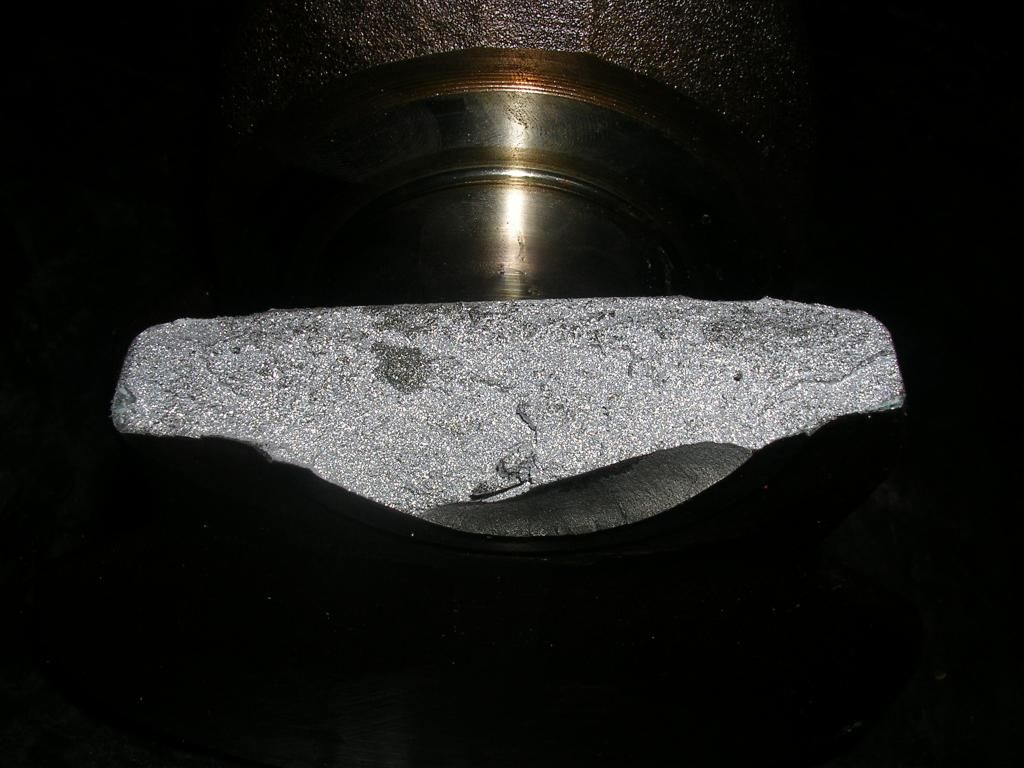 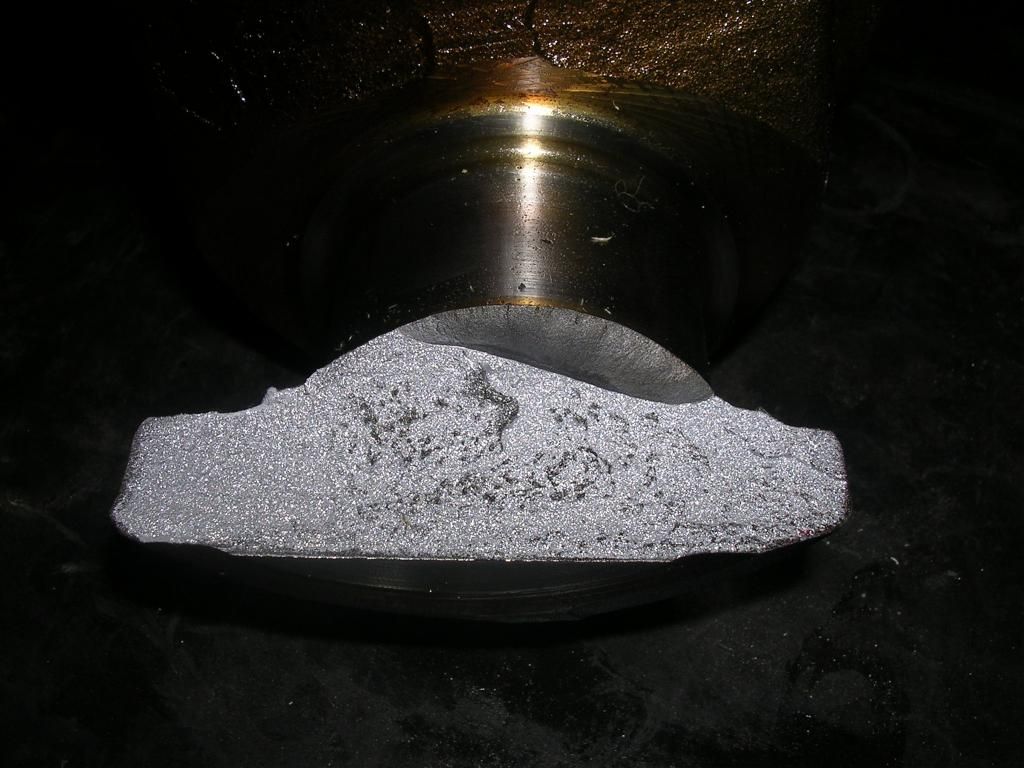 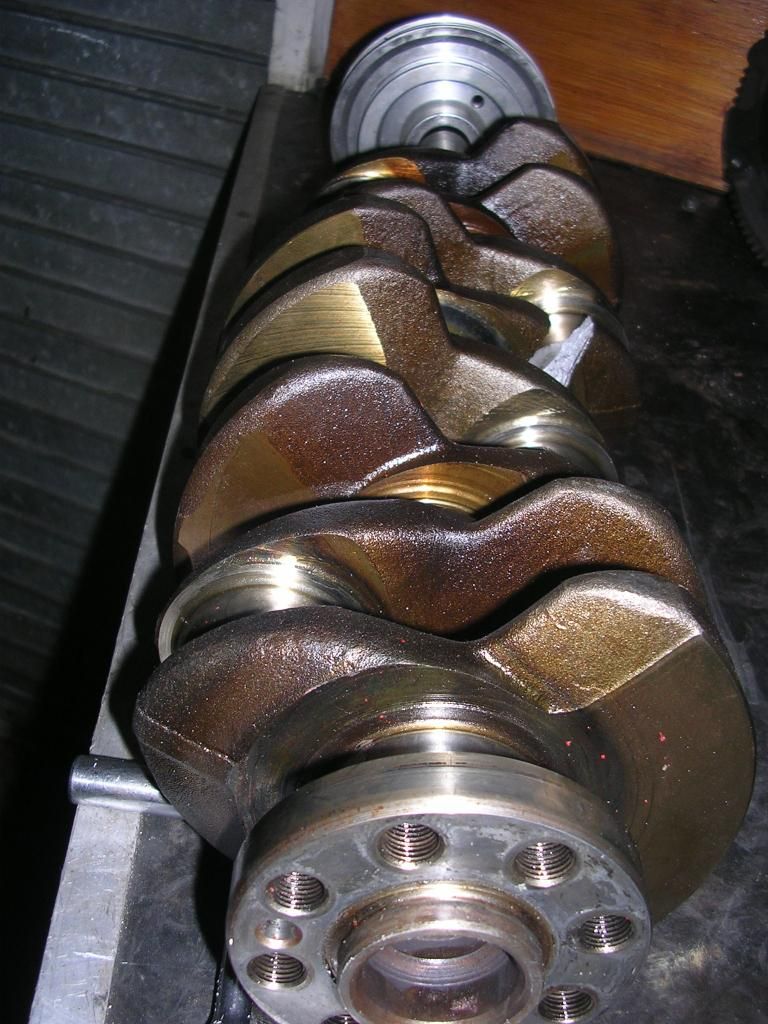 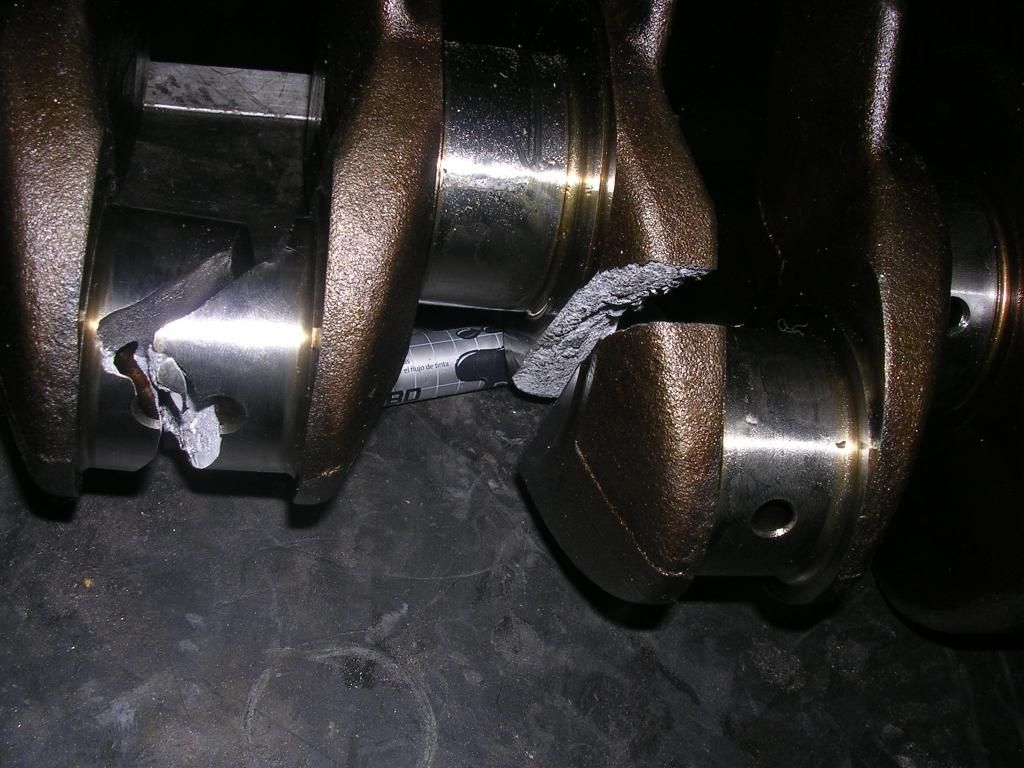 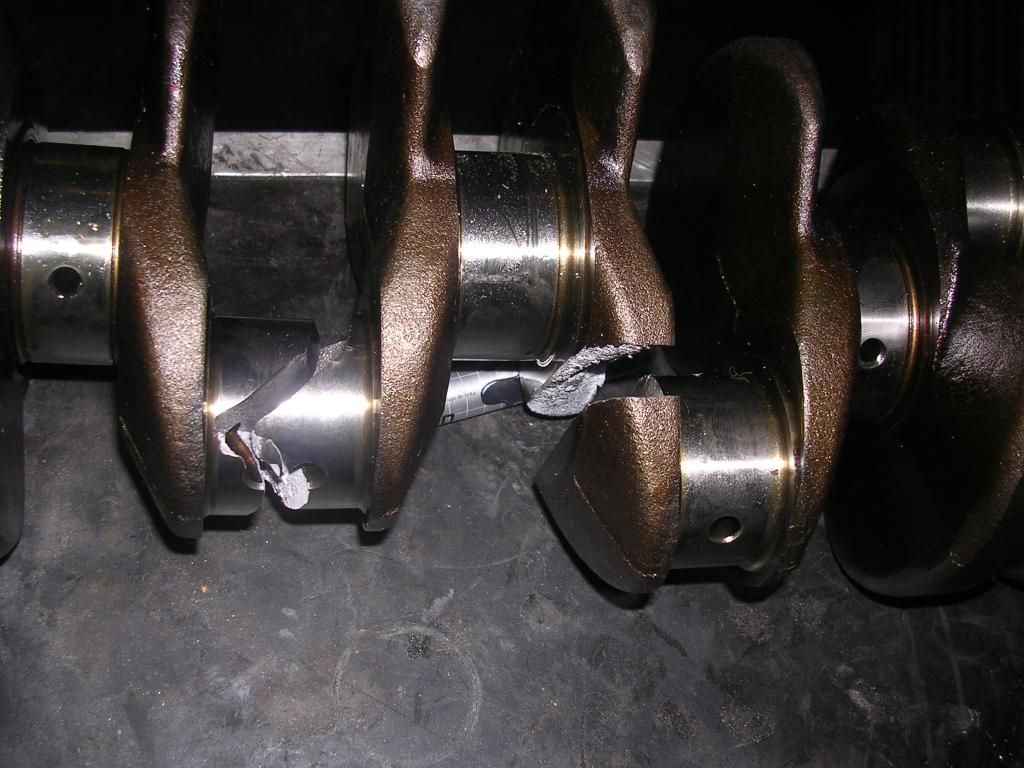 Tim Sorry Tigs. Taken from the GT4OC: QUOTE ("tbdevelopments") Iíve been saying this for countless years to my customers not to fit the alloy crank pulleys in replacement of the standard Damper Pulley. Toyota did this for a reason and Iíve seen countless failures of the crank and quite a few with my own 2 eyes but up till now I have not recorded a failure, just did the repair as instructed. Well I had a customer come to me with a knocking coming from the bottom end of his GT4 ST205, the knocking sounded very much like a bigend rattle so I advised that if this was caught early enough we could drop the sump and as long as the crank was in perfect condition and the journal measurements came within specs and a plasti-guage final check we could get away with re-shelling the conrods, which basically means fitting new bearings with the crank in-situ and just bolt it all back up. If done correctly this is a perfectly adequate repair and will give many years of trouble free motoring. Conrod bearings will wear because of a few reasons, Age and power is the main one which is the conditions that give the most successful repair of this nature. The other is foreign material or metal entering the bearing or lack of oil, these will typically damage the crank which requires a bottom end partial rebuild. Upon inspection of this car I noticed it had an alloy crank pulley fitted (pictured below)    The sump was dropped and the bearings were inspected, #1,2,4 were all in perfect condition. #3 was in a terrible state, extensive wear and a deep grove down to the base metal of the bearing. This was the cause of the knocking. The crank was inspected and seemed in good condition but found a small lump on the top of the journal which you could just feel with your finger tip, at the time it was facing the top of the engine so I was feeling blind. Believing at first to be a part of the bearing stuck to the surface I rotated the crank to give a better view but found this damage instead. There was a fine Hairline crack which ran almost 3/4 the way around the bearing journal of the crank, and in one part the surface had pushed upwards creating that small lump felt earlier, and the cause of the deep grove created in the bearing. Damage pictured below      The job was completed with a new set of bearing throughout, a replacement crank that was rebalanced, journals polished for clearance and rebuilt. The alloy pulley was also replaced with a factory item and the customer collected his car, Which had an initial fire-up and running-in by my to set the bearings and 300miles of normal driving before replacing the oil and going back to normal full boost operations. The car this happened to only modification was an exhaust system; boost was even standard so power wouldnít have exceeded 260bhp at the most. Yet the crank had failed. To put this into perspective weíve done drag cars running over 900bhp with standard cranks without a single failure or even bend. Some models for testing were also extremely machined to remove any metal we could for revablity, they were machined like pieces of paper and at still exceeding 900bhp still not a failure. All these were fitted with the standard damper pulley. Yet this example failed at 260bhp with a pulley that could control the harmonics which had lead to its premature failure. The reason behind the failure was Harmonic Resonance Failure. Without getting to in-depth Iíll keep the explanation simple but there are a few good examples for the technical minds amongst us on wikipedia. http://en.wikipedia.org/wiki/Resonance http://en.wikipedia.org/wiki/Harmonic_oscillator Basically everything in the universe vibrates, whether it is the human body, sheet of metal, or in this case a crank. This is called its structural resonance frequency. Now this frequency is best expressed as a wave, with its peaks and troughs. And if you can generate an additional wave with the matching frequency (so the peaks and troughs match) the amplitude of that wave will grow, or the item will vibrate with more force, itíll keeps growing until it structurally fails on a molecular level. To put this into everyday context you need to picture a swing with a fat man on it and your trying to push the swing with your little finger, Normally this isnít going to happen but if you can get the swing started adding the small amount of force at the correct period, just at the peak of the swing you can over time make the swing oscillate higher and higher. This swing is the oscillation frequency and at the top of each swing is the peaks of the wave form and the base of the swing would be expressed as its trough. Now if you continued to keep adding this small force at the top of each swing the arc would eventually get higher and higher until either the swing broke or the fat man fell off, this would be the expression of the structural resonance failure. To stop this you need a simple damper that will effect outside frequencies (in our case the engine) or crank rotation from matching the frequency of the crank resonance. Going back to our fat man on the swing the damper would be effectively stopping the outside force, (you with your little finger) pushing on the swing at the correct time, for example before the swing meets its peak point, This would do nothing to aid the swing and certainly wouldnít add force the its momentum making it arc higher and higher. This is what the Toyota standard Harmonic Damper Pulley does, it removes harmonic resonance from the crank and additional frequencies causing the failures were seeing above. For curiosity purposes I went all over the crank looking for more hairline cracks and found another around #2 journal leading into the counterweight but it was only very small, around 1cm in length but if left unattended would have grown like #3. So to see how far the resonance damage had gone I caused a controlled failure of the crank by putting in it a press until it snapped on the cracked areas. The pictures of this can be seen below. If you analyze the pictures you will see there are 2 different types of metal texture. The shinier, almost polished appearance is the damaged caused by the resonance; this is a failure on the molecular level and as you can see it quite extensive in #3 and starting to spread inwards on #2 just being visible on the outside edge. The other type is a more harsh texture, this was good metal until the press finished it off, this is typical of a pressure break where the cast material of the crank has basically shattered and all this was caused by me so ignore that. But it does show the 2 different types of damage, and how close this celiac came to complete destruction, where instead of a hairline crack and a rattley bearing the crank would have snapped pushing the rods out the side of the block casing and the entire engine unit would have been a total write-off. Before people jump the gun and say ďwell Iíve got one and running 400bhp for yearsĒ this isnít a situation where itís a loaded gun at your head, where you fire you will die. Itís a situation where failures can/normally happen eventually, ranging from a matter of weeks to years, and from standard power up to 1000bhp. Itís a device which doesnít address the base foundation of structural physics where the original Toyota unit does. I hope this has enlightened people to the dangers of fitting an item like this, yes you will save around half the weight of the stock pulley but this really doesnít add up to any noticeable gains in performance or revability and all its doing it radically effecting the longevity of the engine.          Tim Still want shiny alloy light weight pulleys? |
Posts in this topic
 Dudleydaftdog Alloy crank pulleys any good??? Mar 20, 2014 - 2:05 PM
Dudleydaftdog Alloy crank pulleys any good??? Mar 20, 2014 - 2:05 PM
 Bezik777 I'd say no due to lw pulley is not balanced...... Mar 21, 2014 - 10:19 PM
Bezik777 I'd say no due to lw pulley is not balanced...... Mar 21, 2014 - 10:19 PM
 Dudleydaftdog Thanks Bezik777. That's good to know. Will giv... Mar 22, 2014 - 5:01 AM
Dudleydaftdog Thanks Bezik777. That's good to know. Will giv... Mar 22, 2014 - 5:01 AM
 Smaay i highly recommend going back to stock crank pulle... Mar 22, 2014 - 10:07 AM
Smaay i highly recommend going back to stock crank pulle... Mar 22, 2014 - 10:07 AM
 Dudleydaftdog Thanks Smay' gonna look for one asap. I'd ... Mar 22, 2014 - 10:30 AM
Dudleydaftdog Thanks Smay' gonna look for one asap. I'd ... Mar 22, 2014 - 10:30 AM
 mkernz22 I was looking into getting a lightweight pulley se... Mar 24, 2014 - 7:46 AM
mkernz22 I was looking into getting a lightweight pulley se... Mar 24, 2014 - 7:46 AM
 yellowchinaman there is also a good post in the GT4OC called ... Mar 24, 2014 - 11:50 AM
yellowchinaman there is also a good post in the GT4OC called ... Mar 24, 2014 - 11:50 AM

 Tigawoods QUOTE (yellowchinaman @ Mar 24, 2014 - 1... Mar 24, 2014 - 11:58 AM
Tigawoods QUOTE (yellowchinaman @ Mar 24, 2014 - 1... Mar 24, 2014 - 11:58 AM
 Dudleydaftdog Guys can't thank you all enough for the info a... Mar 25, 2014 - 8:08 AM
Dudleydaftdog Guys can't thank you all enough for the info a... Mar 25, 2014 - 8:08 AM
 Syaoran Lightweight pullies are retarded on any inline 4 c... Mar 25, 2014 - 1:20 PM
Syaoran Lightweight pullies are retarded on any inline 4 c... Mar 25, 2014 - 1:20 PM
 mkernz22 I'm pretty glad I didn't spend the money o... Mar 25, 2014 - 2:25 PM
mkernz22 I'm pretty glad I didn't spend the money o... Mar 25, 2014 - 2:25 PM
 Syaoran The crank pulley is the only important one I would... Mar 25, 2014 - 7:39 PM
Syaoran The crank pulley is the only important one I would... Mar 25, 2014 - 7:39 PM
 Dudleydaftdog Feel a bit sick... My forged fresh built engines k... Mar 29, 2014 - 11:49 AM
Dudleydaftdog Feel a bit sick... My forged fresh built engines k... Mar 29, 2014 - 11:49 AM
 mkernz22 QUOTE (Dudleydaftdog @ Mar 29, 2014 - 12... Mar 31, 2014 - 9:41 AM
mkernz22 QUOTE (Dudleydaftdog @ Mar 29, 2014 - 12... Mar 31, 2014 - 9:41 AM  |
1 User(s) are reading this topic (1 Guests and 0 Anonymous Users)
0 Members:
| Lo-Fi Version | Time is now: September 18th, 2025 - 11:52 AM |




